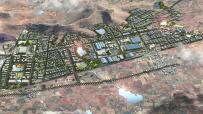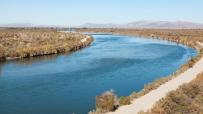



Jacobs. A world where you can.



As climate change threatens water security around the world, more communities are turning to water reuse as a resilient water supply solution and embracing the OneWater principle that all water has value. Jacobs has been supporting clients with water reuse programs for decades, beginning with the first applications of advanced wastewater treatment technologies in the 1960s. We provide our clients with a full range of services, from water reuse feasibility studies to design, construction and operations.



We’ve provided design-build services to the water sector for over 25 years and delivered more than 150 projects. We offer fully integrated design-build and design-build-operate capabilities to tackle the most complex water challenges and work in close collaboration with our clients.



For more than 30 years, Jacobs has been responsible for planning and implementing Lead and Copper Rule-related strategies which protect millions of people in the U.S. and Canada. Our work includes enhanced water quality monitoring strategies, sampling plan development, harvested pipe-scale analysis, lead service line inventories and replacement plans, corrosion control studies and the incorporation of equity and environmental justice considerations into compliance programs.



A curated selection of some of the top-listened to and trending podcast episodes from our popular If/When podcast series.



As a purpose-led company, we know we have a pivotal role to play in addressing the climate emergency. We consider this not only good business, but our duty to channel our technology-enabled expertise and capabilities toward benefitting people and the planet.



We work in partnership, delivering some of the most challenging, diverse and innovative projects and programs globally across multiple sectors. We integrate complex interfaces across planning, procurement and delivery to help unlock better social, environmental and economic outcomes from mega and giga projects.



As our clients navigate the digital transformation and growing cyber risks, we have positioned ourselves at the forefront of this growth, adding digital capabilities, products and tools to serve a growing set of customers.



Sit down with our visionary team of thinkers, dreamers and doers to see what a day in the life is like.



Together with our visionary partner, PA Consulting, we're establishing our position in high end advisory services, creating a springboard to expand in high value offerings beyond the core.


At Jacobs, we're challenging today to reinvent tomorrow by solving the world's most critical problems for thriving cities, resilient environments, mission-critical outcomes, operational advancement, scientific discovery and cutting-edge manufacturing, turning abstract ideas into realities that transform the world for good. With approximately $16 billion in annual revenue and a talent force of more than 60,000, Jacobs provides a full spectrum of professional services including consulting, technical, scientific and project delivery for the government and private sector.



The only certainty about the future is uncertainty. Resilience is an attribute of a smarter planet, and requires planning and adapting ahead of potential threats. We help our clients survive, recover, adapt and thrive.



Jacobs is working to help clients across the United States secure federal funding for projects that make our cities and communities more connected and sustainable. Working hand-in-hand with clients from coast to coast and everywhere in between, Jacobs develops bold, innovative solutions to address the nation’s toughest challenges.



Now more than ever, we appreciate the hard work, sacrifice and dedication of the medical profession in ensuring the health and safety of our communities.



Together, we are stronger. Together, we can transform the future.



Stories that capture our partnerships and innovative impact for a more connected, sustainable world



As cities prepare for a changing future, transformative trends such as resource scarcity, digital proliferation, security and climate change require fresh perspectives and new ideas – and water, which underpins some of the biggest opportunity and challenges in our time – is a top consideration in communities near and far.
The World Economic Forum listed water crises as one of the top ten global risks both in terms of likelihood and impact for 2019 and beyond – and those in control of treating and delivering water services are challenged to plan how their complex systems will operate and affect each other in the future. It’s no simple task – these plans need to consider how the systems can be built economically and operated to work together sustainably, even in the face of uncertainty.
But what if we showed you how Replica™, Jacobs’ digital twins solutions software, dynamically analyzes resource supply, demand, cost, risk and other factors throughout systems to help clients around the globe make resilient decisions for the future?
in saved costs identified using Replica Planner software for critical infrastructure assessment
successful project applications around the globe
“Being able to quickly perform extended period simulations of large, interconnected systems and visualize the results allows diverse stakeholder groups to understand tradeoffs and make informed decisions. We can move forward with high confidence in our selected approaches.”
Raja Kadiyala
Jacobs Global Digital Solutions Director
As water issues intensify, so does awareness of the effects of water management decisions. Decisions at one point in the water cycle affect all the others – from water supplies to treatment, conveyance, wastewater treatment, reuse and return to the natural environment – and that’s how the Replica Planner™ tool, part of Jacobs’ suite of digital twins solutions software, makes a difference.
Replica Planner is scalable to different sizes and adaptable to different types of resource management challenges. Using the software, complex resource systems can be dynamically simulated to illustrate the changes of system components over time, especially in considering a range of possible future scenarios:

India’s most ambitious infrastructure program, the Delhi - Mumbai Industrial Corridor (DMIC) – aims to develop eight new industrial regions as smart cities, including AURIC (the Aurangabad Industrial City) for which Jacobs is serving as program manager and the Manesar-Bawal Investment Region (MBIR) and Khushkhera Bhiwadi Neemrana Investment Region (KBNIR), for which we developed an integrated water resource management plan. DMIC’s vision is to create a strong economic base with state-of-the-art infrastructure to activate and support local commerce, enhance foreign investments, real-estate investments and attain sustainable development.
Located in the state of Haryana, MBIR and Rajasthan, KBNIR are the regions identified for first-priority development with expected completion by 2040. These are highly water-stressed areas, with competitive demands from various stakeholders for limited available water resources. DMIC engaged Jacobs to develop and implement a reliable, robust and resilient integrated water management plan – that’s practical, can be implemented within the project timeframe and produces optimal outcomes from economic, social, technical and environmental aspects.
We needed to create a dynamic simulation model that could analyze water supplies, demands, costs and risks in the system, and then use optimization techniques to define the best water management strategies that meet the goals of MBIR and KBNIR on a system-wide basis.
Our team proposed Replica Planner to conduct the modelling and water balance analyses to establish integrated water resources system behavior. Using the software, we provided several benefits, including:
“To support development and functioning of world class industrial infrastructure at MBIR and KBNIR, reliability of water services and management through future was critical. Delhi - Mumbai Industrial Corridor Development Corporation – based on our global and varied experiences and local capabilities – selected us to develop an integrated water resource management plan that identified a diverse water portfolio to sustainably meet MBIR’s and KBNIR’s water demand through 2040. With Replica Planner, we developed a decision support model to operationalize water supply for the regions and select a preferred water source based on water requirement and resource availability.”
Vinod Singh
Jacobs Director - Asia

The Colorado River serves 30 million people and irrigates 3.5 million acres of cropland in the U.S. and Mexico – but climate variation and higher temperatures have put its long-term viability at risk. Between 2000 and 2014, the river lost nearly one-third of its flow and that number is expected to increase in the next 40 years, by up to another 20%.
The arid city of Tucson, Arizona, is one of the communities depending on the river for its water needs. Its Clearwater Renewable Resources Facility supplies a major portion of Tucson’s future water supply, allowing for a dramatic reduction in groundwater pumping throughout the region and particularly within the central part of the city. Each year, renewable water resources account for approximately 90% of Tucson’s potable water supplies and a majority of this water comes from the two recharge and recovery facilities located in Avra Valley. Once recovered, this water is sent to the Hayden-Udall facility for pH adjustment and disinfection. It is then pumped through a 96-inch-diameter pipeline. Given that a majority of Tucson’s renewable water supply passes through this transmission system, that had a history of failures, Tucson Water knew they needed to invest in plans to secure its water system reliability.
So, they planned to construct a redundant pipeline for an expected $200 million and commissioned Jacobs to develop a model to evaluate the supply system and perform a risk assessment of key infrastructure. We used a Replica Planner model to perform multi-variable analysis that evaluated water supply portfolios under a range of future scenarios – and then performed simulation runs for the proposed alternatives as they evolved over time.
Using Replica Planner, we provided water balance analysis for different zones and the entire water system; alternatives feasibility analysis including business as usual alternatives; risk assessment of key infrastructures (selected pipes); and life cycle cost evaluation for each alternative to combine capital and operating costs performance for comparative review of alternatives. Through the dynamic modeling capabilities offered by the software, our analysis identified a recommended strategy that could defer and reduce the size of the redundant transmission line to save ratepayers over $100 million in costs over a 50-year period.
The Replica Planner model’s capabilities are not limited to water industry, we’ve also applied the software for capital improvement planning and detailed operations studies for agricultural, mining and industrial clients as well as irrigation districts, regional resource management organizations, municipalities and whole-city community developers.